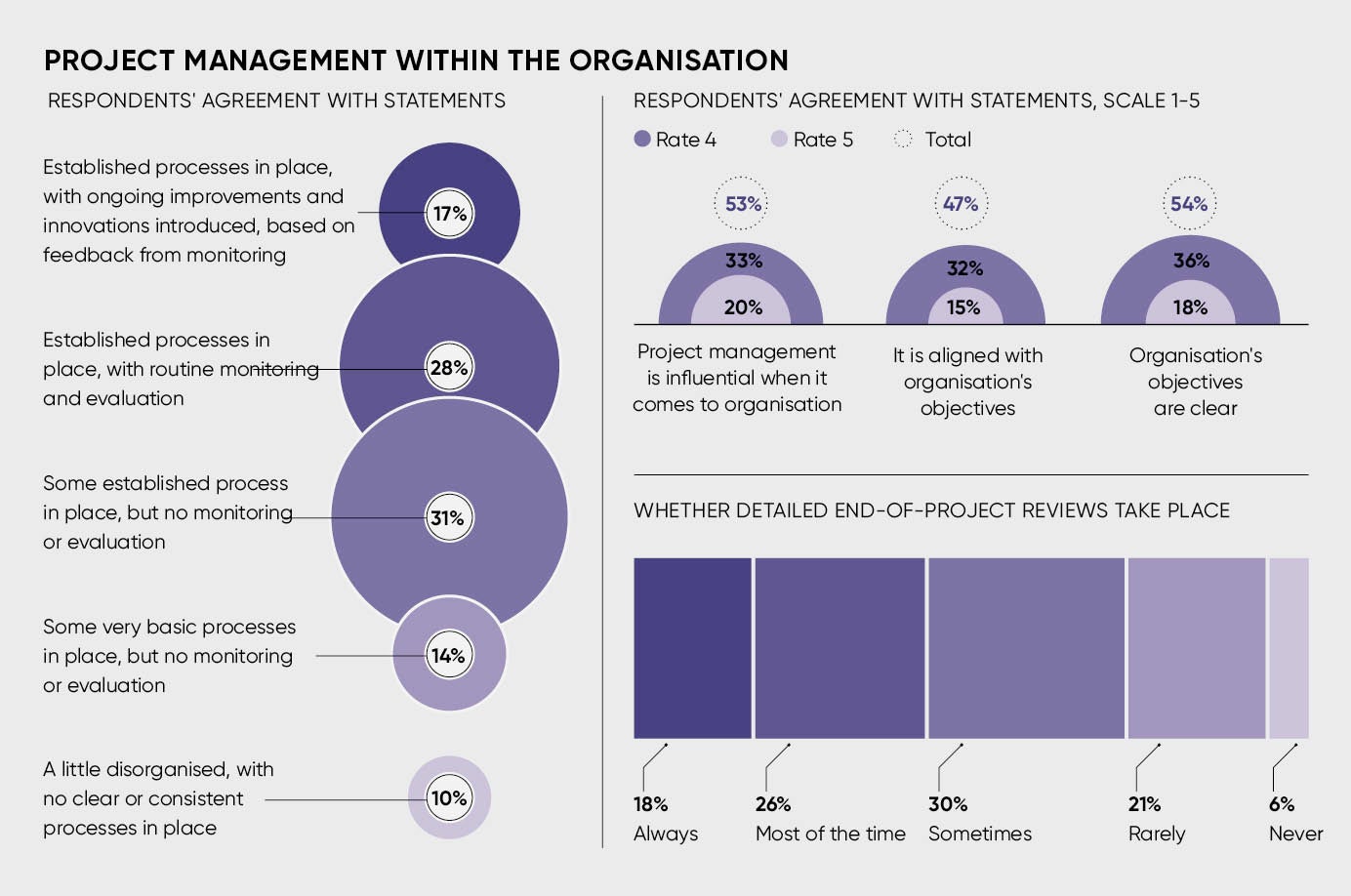The world of project management is evolving at an exponential rate – blame it on the fourth industrial revolution, disruptive technologies or a shake-up of business practices. It’s now impacting all industries, as well as economies across the globe. The market is increasingly cut-throat, with pressure on productivity and clients want delivery today, not tomorrow.
“There’s a massive paradigm shift that we haven’t seen since the invention of the Spinning Jenny during the first industrial revolution – the business world is rapidly changing from products to services. Expect more automation, regulation and compliance in the years ahead,” says Cameron Stewart, head of project portfolio management product development at AXELOS, a global best-practice company.
“This has profound implications in terms of how we manage projects. What used to take 18 months must now take 12. You need to structure your work better so you can deliver results in a world where ‘everything is now’.”
It’s also crunch time for money and schedules as clients eke out value. In a survey of more than 550 project managers from Europe, North America and Asia, 76 per cent said the environment was more competitive, while 74 per cent said budgets and timelines were tighter. Yet over half said there was nothing to monitor or evaluate the management of their projects.
“This last result I find the most shocking,” says Mr Stewart, whose company developed PRINCE2, the world’s most-practised method for project management. “Increasingly people focus on delivery. They forget about processes and control, as well as how issues can be resolved. This means that for each new project, knowledge assets must be relearnt. This is a senseless waste of money.”
Certainly there’s a lot of room to improve project management. Even if managers have good intentions, a lot falls by the wayside. People have over-ambitious time frames, expectations evolve over time and there’s often poor communication at all levels. This can be to do with how an organisation functions or how teams talk to one another.
“Project managers are under so much pressure to get work started that they don’t set up the processes and work streams to make a project function properly. They just spend every day firefighting. We should be encouraging them to plan purposefully,” says Mr Stewart. “Having a great deal of agility is also essential in a bid to adapt projects quickly if change is needed.”
This is one of the reasons why the team at AXELOS have been busy updating PRINCE2. It maybe the method of choice for more than a million certified practitioners worldwide, but it hasn’t been updated since 2009. Now the PRINCE2 2017 update has been launched – the first major update in eight years.
It took 18 months to reconfigure, involved a global community of users providing feedback and reviews from more than 100 project management professionals, as well as a great deal of input from training personnel.
This involved putting a lot of real-world best-practice examples into the product, including benchmarking and research. Much has changed in the world of project management since 2009. The boom in technology and social media means managers across the globe need to adjust the way they conduct business.

“We want organisations to deliver more for less. This update is more flexible and scalable, and is also clearer than before and allows greater creativity,” explains Mr Stewart.
“The core principles are still the same. But there’s now a greater need for versatility and more pragmatism, which we’ve incorporated. All the themes in the PRINCE2 2017 update are easier to read. They’ve also been improved to help support new material.”
Data from the AXELOS survey shows that the two most likely causes of project failure are unrealistic schedules, as well as a moving brief or changes in expectations. Failure is also less likely to happen among those who conduct reviews.
“We need to continue to work in better ways. We are trying to build a knowledge asset that project managers can tap into. What we are doing is trying to own the idea of the ‘way it’s done best’ and be the home of global best practice. We think the PRINCE2 2017 update goes some way to achieving this,” says Mr Stewart.
Increasingly project managers need to respond to technology, and there are also greater expectations from both stakeholders and customers. Tailoring projects is crucial rather than applying methodologies rigidly.
“Unfortunately this is something many project managers struggled to grasp about PRINCE2 and, as a result, they’ve shied away from using it. They claim it can be bureaucratic and an unnecessary overhead on their businesses. Dispelling these myths is one reason why it was time to update it and make this successful methodology more useful to people,” says Mr Stewart.
AXELOS are now forecasting better penetration for this methodology, especially in emerging markets where project management best practice is on the upswing, and wider use in other developed industry sectors.
“We are seeing greater interest from India and China where there’s a growing need to manage projects more effectively and using up-to-date forms of communication including mobile training videos and online tutorials,” says Mr Stewart. “It’s all about investing in best practice. PRINCE2 2017 is very much part of that story.”
For more information please visit www.AXELOS.com/PRINCE2-2017

